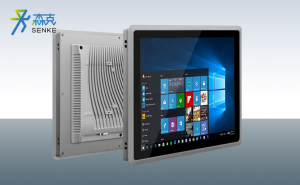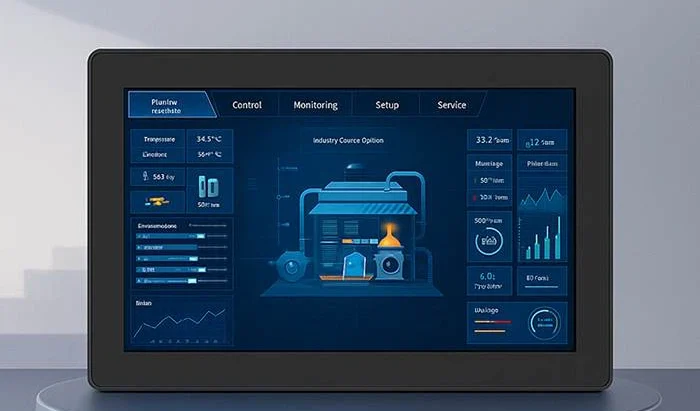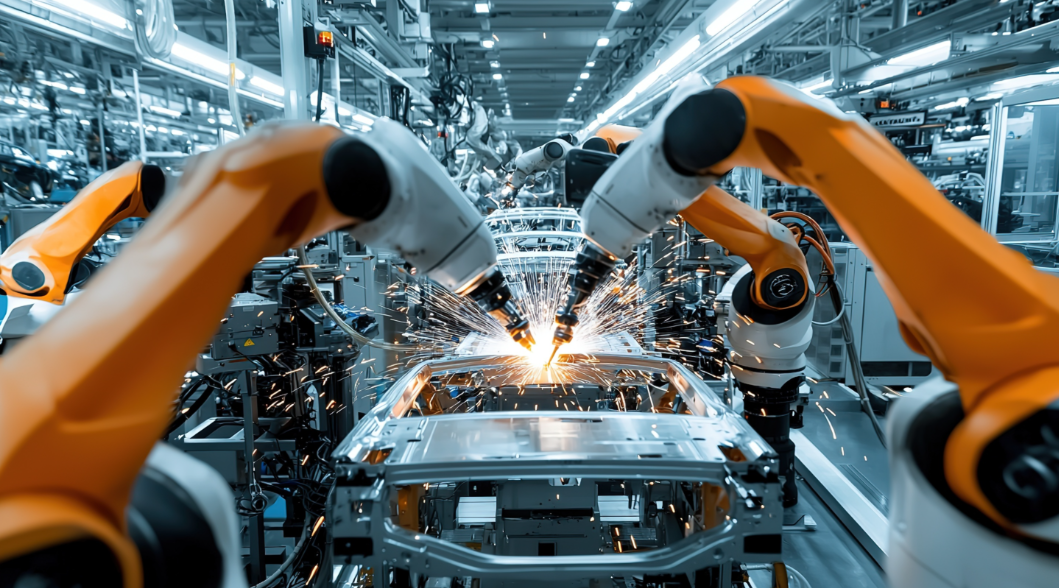Intelligent manufacturing in the era of Industry 4.0
Industry Trends, News 2022-06-14
Introduction
Industry 4.0 and Industry 3.0 are not progressive upgrades but rather key and transformative changes in the underlying methodology. There are differences between the two in many underlying, core fields and key technologies such as core methodologies, value creation mechanisms, production paradigms, architectures, data sources and collection methods, as well as in the relationships between design, production and final use.
At present, new-generation electronic information technologies such as the Internet of Things, artificial intelligence and 5G are deeply integrated with manufacturing, and the fourth industrial revolution represented by intelligent manufacturing, namely the era of fully intelligent Industry 4.0, is taking place. Unlike the previous three industrial revolutions, including the electronic information era of Industry 3.0, Industry 4.0 will fundamentally change the production paradigm, production mode and lifestyle, and promote the development and transformation of the entire society’s productive forces at a deeper level and on a larger scale.
The essential differences between Industry 4.0 and the previous three industrial revolutions
Industry 4.0 is the ubiquitous connection and integration of the physical world (physical space) and the digital network world (cyber space), and it is an intelligent and epoch-making technology that deeply integrates manufacturing with the new generation of information technology. IT optimizes production processes by integrating information technology (IT) with operational technology (OT), and through intelligent infrastructure driven by Internet of Things (IoT) devices, cyber-physical systems (CPS), and artificial intelligence (AI) algorithms, thereby significantly enhancing productivity. In recent years, the fourth industrial revolution represented by Industry 4.0 has been on the rise.
Industry 3.0 refers to the electronic information age. It emerged in the 1970s and is an automation method mainly based on electronic control technology. Through the extensive use of electronic and information technology, the degree of automation in the manufacturing process has been greatly enhanced, which has greatly promoted the development of productivity.
From Industry 2.0 (Electrification and automation) to Industry 3.0 (the electronic information age), electrical control technology has been applied on the basis of physical manufacturing to enhance precision and support larger-scale production. The transition from Industry 3.0 to Industry 4.0 is not merely about empowerment; rather, there are essential differences. Specifically, the differences are mainly reflected in the following aspects
The underlying methodologies are completely different
The electronic information era represented by Industry 3.0 is the integration of digitalization and traditional manufacturing. It is based on the three theories of information, systems, and control, and through information and communication technology (ICT), that is, the extensive application of electronic and information technology, the degree of automation control in the manufacturing process has been further significantly enhanced. Since the 1970s, Industry 3.0 has adopted mathematical simulation methods to quantitatively describe manufacturing equipment, manufacturing systems and product performance in the manufacturing process, transforming process design from experience-based testing to scientific reasoning, and ultimately achieving digital expression of products, manufacturing equipment, manufacturing processes and manufacturing systems. Industry 4.0 is the comprehensive integration of network information technology and the manufacturing industry. The intelligent manufacturing it represents is marked by intelligence (CNC machine tools + intelligent control), applying network information technology to the mechanical manufacturing industry for comprehensive integration, achieving informatization and real-time sensing and detection, intelligent and knowledge-based process design, and flexible and automated control execution. In Industry 4.0, cyber-physical systems (CPS) significantly enhance productivity by creating intelligent infrastructure to optimize production processes. Under Industry 4.0, products integrate information storage, sensing, and wireless communication functions, maintaining their own information throughout the entire supply chain and life cycle. This significantly enhances the degree of automation in industrial production and product circulation, enabling enterprises to complete customized production more rapidly and automatically. By leveraging cyber-physical systems (CPS), the supply, manufacturing and sales information in production can be digitized and made intelligent, ultimately achieving rapid, effective and personalized product supply.
In the past, during the era of Industry 1.0, 2.0 to 3.0, the five fixed links of raw materials, mechanical equipment, factories, transportation and sales were all indispensable. “Industry 4.0” is the application of new technologies such as the Internet of Things and intelligence to enhance the manufacturing level, transforming manufacturing towards intelligence. It achieves real-time management through network technologies that determine the production and manufacturing processes, etc. It is a “bottom-up” production model revolution, which not only saves innovative technologies, costs and time, but also has great potential and opportunities to cultivate new markets.
The core values of digital intelligent technologies are different
The core value of Industry 3.0 lies in the large-scale production of a single type of product. By leveraging electronic information technology, it aims to enhance the marginal effect of production as much as possible, improve production efficiency and yield rate, and reduce errors. Industry 4.0 has driven the reshaping or disruptive innovation of business models, production models and value chains. Its core value lies in the large-scale customization of multiple types of products, which not only meets personalized demands but also maximizes the cost advantages of large-scale production as much as possible. The intelligence of the Industry 4.0 era, based on the automation technology and architecture of the Industry 3.0 era, realizes the transformation from centralized central control to distributed enhanced control production mode. By using sensors and the Internet to interconnect production equipment, a large-scale production mode that can flexibly produce and meet personalized demands is formed.
With the rapid development of information technology, the changing demands of people for products have further made flexibility the greatest challenge faced by the manufacturing field. Product updates and replacements are becoming increasingly frequent, and the product life cycle is getting shorter and shorter. This means that it is necessary to have the ability to respond quickly to product updates and replacements, while also taking into account the reduction in product batches due to the shortened life cycle. As a result, problems such as rising costs and price pressure have emerged. Industry 4.0 integrates existing automation technologies with rapidly developing information technologies such as the Internet and the Internet of Things to address the issue of flexible production. It aims to not only meet personalized demands but also gain the cost advantage of large-scale production, turning the challenge of production flexibility into a new opportunity.
Data has a greater impact on decision-making mechanisms and structures
Under Industry 3.0, the production process of enterprises is tree-like and is a central decision based on the preset process of planning and execution. Through information technology means such as APS (Advanced Planning and Scheduling System) and MES (Manufacturing Execution System), the planning department issues production instructions to the site, specifying the products to be produced, quantities, job responsibilities, job times, job start times, job end times, etc. The issuance of production instructions is realized in the form of “production instruction sheets” Among them, the production instruction sheet is the plan and core of the production arrangement. Under Industry 4.0, the production processes of enterprises are in a star-shaped cloud structure, meaning that to a certain extent, the production processes are driven by distributed data. By integrating industrial cloud and blockchain technology, enterprises have established a distributed intelligent production network that combines cloud and chain. Therefore, in the value production stage, the distributed intelligent production network advocates that enterprises’ production should create value on the basis of meeting personalized demands. The distributed intelligent production network introduces “user demand creates content” into the manufacturing industry, subverting the traditional production model of manufacturing. The product development process is gradually becoming consumer-oriented. Consumers participate in the product development and production process earlier and more accurately, and continuously improve the products through distributed networks. This enables enterprises to no longer operate in isolation but closely connect with the market and customers, thus ensuring profits.
Therefore, it can be said that the production process under Industry 4.0 is to distribute the management of data in the R&D, design, production, sales and other links, achieve the bidirectional and multi-directional flow of data instructions, and ultimately realize “data flow automation”.
The scope of data sources and the methods of collection and interaction have changed
The production decision-making mechanisms of Industry 3.0 and 4.0 are quite different, and their data sources are also quite distinct. Under Industry 3.0, the data required for enterprise production is mainly in-factory data, and rarely involves data outside the factory. Data outside the factory has a relatively small impact on production decisions. The off-site data required is mostly supply chain information and not the information that affects core decisions. However, under Industry 4.0, the proportion of off-site data has increased significantly. As the ultimate goal of Industry 4.0 is to enhance the productivity, efficiency and flexibility of enterprises, but it is constrained by the complexity of production and the extremely difficult management brought about by complex production, modern production requires that sensors be equipped in every link from products, tools, transportation to equipment, and be able to communicate with each other through standard protocols. Therefore, enterprise production must rely on brand-new software systems, which can not only cover the entire product life cycle and coordinate massive data flows, but also independently control equipment to carry out complex and customized production operations. All of this requires a large amount of off-site data as support. In comparison, Industry 4.0 has more comprehensive and real-time requirements for data segments.
Industry 4.0 represents a brand-new technological transformation in the industrial manufacturing sector
Industry 4.0 should be built on the standardized modules of Industry 3.0. After in-depth comparative analysis, it is believed that Industry 4.0 and Industry 3.0 are not progressive upgrades, but rather key and transformative changes in the underlying methodology. Industry 4.0, through dynamically configured unitized production, achieves scale and meets personalized demands, fundamentally overturning the traditional production methods of the past. Therefore, it must not be regarded as a simple empowerment of Industry 3.0.
Industry 4.0 can support large-scale, small-batch and multi-specification customization, transforming from the past inventory-based production model to an order-based production model – that is, using defined products or user-defined products. This will surely shorten the delivery period, significantly reduce inventory, and even lead to zero inventory operation. It will also give birth to new industrial forms. In the field of production and manufacturing, demand is driving a new round of production and manufacturing revolution as well as technological and solution innovation. The differentiated demands for products are driving the manufacturing industry to accelerate the release of designs and the launch of products. With the increasing demand for personalization, when the technological and market environment matures, the previous large-scale and replicated production methods aimed at improving production efficiency and reducing product costs will also change accordingly.
Therefore, Industry 4.0 represents a brand-new technological transformation in the industrial manufacturing sector and is a disruptive industrial revolution that is different from the past.
Author
Zhang Yongda is an assistant researcher at the Institute of Industrial Economics, Machinery Industry Economic Management Research Institute
Song Jia, Vice President of “Smart China” and Director of the Two-Industrialization Integration Innovation Center of the Machinery Industry Economic Management Research Institute
This article was published in the September 2021 issue of the magazine “China Industry and Information Technology”, Issue 38.



